
| (often misidentified as: Angonyx testacea) MACROGLOSSINAE, SPHINGIDAE, BOMBYCOIDEA | (donherbisonevans@yahoo.com) and Stella Crossley |

early instar
(Photo: courtesy of
Carol and Trevor Deane,
Whyanbeel, Queensland)

| (often misidentified as: Angonyx testacea) MACROGLOSSINAE, SPHINGIDAE, BOMBYCOIDEA | (donherbisonevans@yahoo.com) and Stella Crossley |

early instar
(Photo: courtesy of
Carol and Trevor Deane,
Whyanbeel, Queensland)
These Caterpillars are green with a black tail spike. Later instars develop a narrow black collar around the head, and stripes of various shades of green along the body.
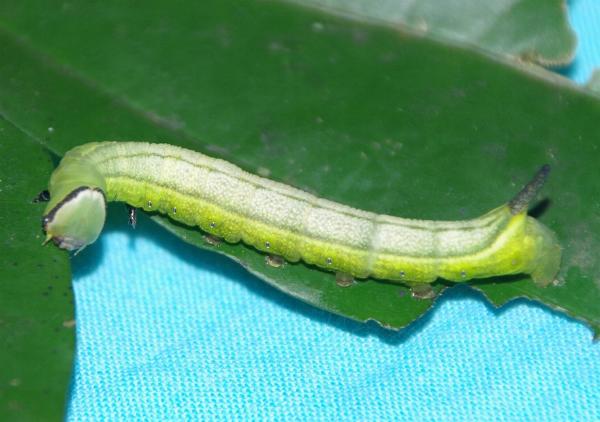
The caterpillars have been found feeding on
The caterpillars grow to a length of about 6 cms. They pupate in a flimsy cocoon amongst the ground litter. The pupa has a length of about 3.5 cms.
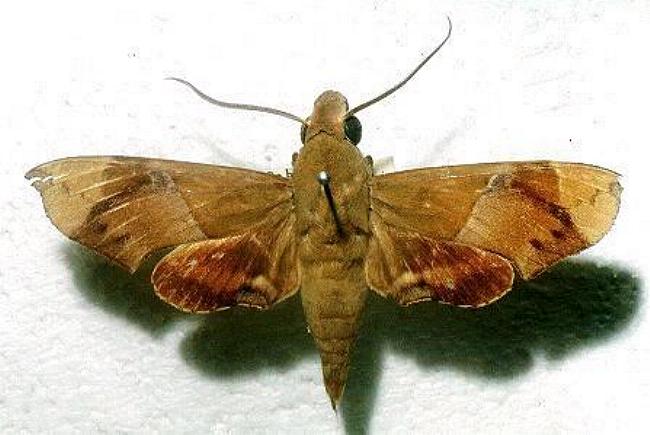
The adult moths have green or greenish-brown forewings, each having a pale band across the middle, and pale wing-tips. The forewings each have a doubly recurved margin, and a concave hind margin. The moths have dark brown hindwings each with a recurved margin and a vague pale submarginal band. The moths have a wingspan of about 5 cms. The green colour fades to brown in dead specimens.
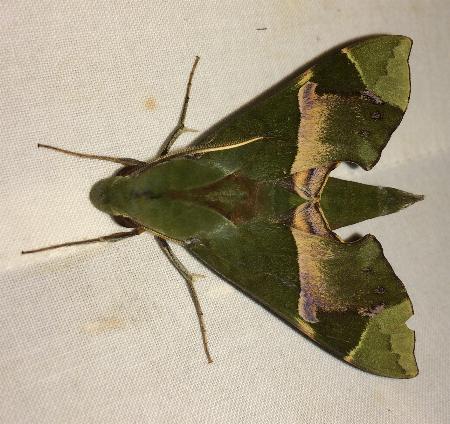
The species is found in Australasia, including :
and also Australia in
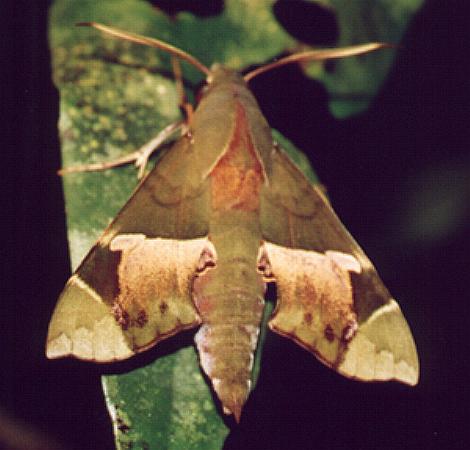
The eggs are laid singly on a foodplant leaf. The eggs are oval and off-white, and develop reddish markings as they mature. The eggs have a length of about 1.6 mm.
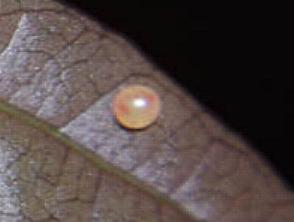
Further reading :
Maxwell S. Moulds, James P. Tuttle and David A. Lane.
Hawkmoths of Australia,
Monographs on Australian Lepidoptera Series, Volume 13 (2020),
pp. 69-71, Plates 9, 78, 84.
Buck Richardson,
Tropical Queensland Wildlife from Dusk to Dawn Science and Art,
LeapFrogOz, Kuranda, 2015, p. 196.
Lionel Walter Rothschild & Karl Jordan,
A revision of the Lepidopterous family Sphingidae,
Novitates Zoologicae Supplement,
Volume 9 (1903), p. 544, and also
Plate 49, fig 14.
 caterpillar |  butterflies |  Lepidoptera |  moths |  caterpillar |
(updated 26 December 2009, 15 February 2015, 12 July 2019, 7 September 2020)